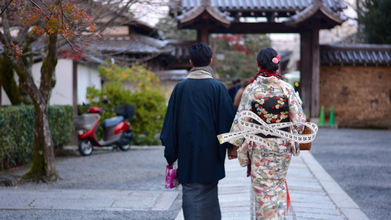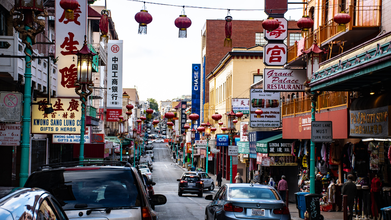- Health Conditions A-Z
- Health & Wellness
- Nutrition
- Fitness
- Health News
- Ayurveda
- Videos
- Medicine A-Z
- Parenting
Wondering Why Decisions Take Time? Here's Why Human Thought Has A Speed Limit

Image Credit: Canva
The human brain, which is often referred to as the greatest achievement in the course of evolution, surprisingly cannot process information as fast as the amount of sensory data it is exposed to. The peripheral nervous system takes environmental information at a rate of over 1 billion bits per second, while our brains can process only 10 bits per second, according to a new research published in the journal Neuron. This discrepancy reveals fascinating insights into human cognition and raises profound questions about how we perceive and interact with the world. At first glance, the brain's ability to process just 10 bits per second may seem underwhelming.
For perspective, this rate pales in comparison to modern internet speeds. "We become annoyed when the WiFi in our home falls to 100 megabits per second because this interferes with streaming shows on Netflix," according to the authors of the study, Caltech's Jieyu Zheng and Markus Meister. In stark contrast, the human brain processes a billion-bit data stream at dial-up internet speed, yet manages to work reasonably well in real-time applications. To reach this number, the scientists considered tasks such as solving Rubik's Cubes or memorizing shuffled decks of cards. Dividing the number of bits for these tasks by the time needed to complete them, they determined that even memory champions who set record times process information at the same snail's pace of 10 bits per second.
Why is Brain Processing So Slow?
This seems a strange limitation for the brain's filtering mechanism. If a single neuron can wire at a rate fast enough to encode 10 bits per second, why does the brain, with its billions of neurons, still process information at such a restricted rate? The study suggests that this is evolutionary, based on the very survival tasks early organisms had to complete.
The first nervous systems, intended to guide creatures towards food or away from predators, had to function on a one-task-at-a-time basis. This single-task focus enabled prompt, decisive action. Modern humans, despite the ability to abstractly think, may have been left with this limitation. Even in such complex tasks that require multitasking, like driving, the brain is essentially juggling its attention between distinct subtasks rather than processing them simultaneously.
Dual-Mode Operation of the Brain
According to the authors, the human brain works on two modes at once. That is, as follows:
1. Outer Brain: It perceives and aggregates tremendous amounts of sensory data-the colors, the sounds, and the textures surrounding the environment.
2. Inner Brain: A minuscule fraction of the same data at a concentrated pace of 10 bits per second gets processed.
The frontier for neuroscience is to understand how these two systems communicate. When driving, the brain is switching focus constantly from traffic signals to the speedometer to potential hazards. Future research could unravel how the "inner brain" decides which bits to prioritize in those high-stakes scenarios.
Also Read: Can You Rewire Your Brain? 6 Ways To Do It
'Cocktail Party Problem' in the Brain
Humans' inability to process multiple trains of thought simultaneously, popularly known as the "cocktail party problem," underscores this limitation. For instance, it is almost impossible to follow multiple conversations simultaneously at a noisy gathering. Evolution may have optimized the nervous system for making a single decision at a time-an advantage when survival depended on determining whether to fight or flee.
Today, the single-minded quality of this cognitive system helps sustain attention but impedes our capacity to multitask. This particular evolutionary trade-off continues to mold the human mind; it affects every aspect of it, from linguistic processing to dealing with high-stress situations.
How Does the Brian Breaks Down Language Processing?
Another experiment gives a clear view of how the brain processes information in speech. Scientists, by using electrodes implanted in the brains of patients suffering from epilepsy, found that it takes the brain 600 milliseconds to think of a word, apply grammatical rules, and say it.
They recorded activity in Broca's area—a critical region for language production—and identified three distinct steps:
Word Recall: Occurring at 200 milliseconds.
Application of Grammar: Takes 320 milliseconds to occur.
Phonology or Sound Organization: Takes 450 milliseconds to occur.
This further supports that the brain operates on a step-by-step approach. Amazing as it might be able to generate speech continuously in a span of milliseconds, the brain's operation does follow a strictly linear approach; its bottleneck of 10 bits per second does not differ from one activity to another.
This new understanding of the brain's speed limit opens doors for further research. How does the inner brain prioritize specific tasks? How might this bottleneck influence artificial intelligence systems designed to mimic human thought processes?
Implications stretch beyond neuroscience. In the era of multitasking, this study underlines the importance of attentional focus. As Zheng so aptly put it, study of real-life situations like driving may be one of the best ways to learn how the brain accommodates changing priorities in real-time.
How You Can Improve Your Brain's Mental Flexibility
Improving the speed of your thoughts and processing requires improving cognitive functions and strategies that enhance mental agility. Here are some ways to optimize your brain's processing power:
Regular Exercise: Physical activity promotes better blood flow to the brain, enhancing cognitive functions. Aerobic exercises like running or swimming improve memory and focus, allowing for quicker thinking.
Mindfulness and Meditation: The practice of mindfulness meditation enhances attention and reduces mental clutter. They help train your brain to focus on one task at a time, thus enhancing processing efficiency.
Mental Stimulation: Engage in activities that challenge your brain, such as puzzles, memory games, or learning a new skill. These exercises stimulate neural connections, sharpening your processing speed.
Adequate Sleep: Sleep is important for cognitive function. The brain is best able to process information quickly and efficiently when it is well rested.
Healthy Diet: A diet rich in antioxidants, omega-3s, and vitamins supports brain health, enhancing overall mental speed.
This is counterintuitive, for the brain takes in information at a mere 10 bits per second, but such is the depth and efficiency of human cognition that it can work through this very effectively. Extraneous data will be filtered out, and focus will be placed where it matters the most: survival, adaptation, and communication.
Although our mental "speed limit" may be maddening for those who multitask, it speaks to the stunning advancement of the human mind—a machine designed for clarity, precision, and survival in an overwhelmingly complex world.
The unbearable slowness of being: Why do we live at 10bits/s? Neuron. 2024
Fact Check: Does Japan Have A Fat Law?

Credits: Canva
The internet is obsessing with the idea that Japan has a fat law, it fines people for being "fat". Talk about sensational headlines, mistranslations, and social media exaggerations. But what does Japan's so-called 'fat law' actually say? Does it really change anything?
Health and Me did a closer fact check on Japan's Fat Law, and here is what we found.
Japan's Metabo Law: What It Really Means?
In 2008, the Japanese Ministry of Health, Labour and Welfare introduced the Metabolic Syndrome Countermeasures Promotion Law, which was popularly nicknamed the 'Metabo Law'. the word 'metabo' comes from metabolic syndrome, a cluster of high-risk conditions that include elevated blood pressure, high blood sugar, abnormal cholesterol, and excess fat around the waist. If left untreated, this could increase the risk of heart attacks, stroke and diabetes.
The law's main focus is on identifying these risks as early as possible. As part of Japan's long-standing annual health check tradition, about 50 to 56 million adults aged 40 to 74 undergo this mandatory waist measurements every year. The waistline thresholds are:
- 85cm for men
- 90cm for women
While the numbers are not arbitrary, they match the International Diabetes Federation's guidelines used to screen metabolic risks.
Is It Illegal To Be Overweight In Japan?
The Times-Union fact check confirms: "Japanese citizens cannot be fined or imprisoned for being overweight". RosePlus Japan also reports that the term "fat tax is a mistranslation and that "it is not illegal to be fat in Japan".
The law does not:
- Fine individuals for their weight
- Send people to jail for being overweight
- Deport or deny visas based on size
- Ban obese people
How Does The Law Actually Work?
The law basically shifts the responsibility away from individuals to governments and employers.
Annual measurement: Employers and local authorities measure the waistlines of eligible adults.
If someone exceeds the limit:
- They are offered counseling, health guidance, and follow-ups.
- After three months, progress is reviewed.
- After six months, they may receive additional health education.
No individual penalties: There is no fine for not losing weight.
Employer penalties:
- If a company fails to reduce the percentage of employees at risk, it may face increased contributions to national healthcare funds.
- Companies like NEC previously estimated potential fines of up to $19 million for not meeting targets
This structure makes the Metabo Law more of a workplace wellness mandate than a personal weight regulation.
Lost In Translation
Much of the misunderstanding comes from how Japanese concepts were translated in English. With the word "law" being reported internationally, it implied a strict legal prohibition.
"Metabo" was incorrectly equated was being "fat", losing its medical meaning.
Was The Law Successful?
- Japan already had one of the lowest obesity rates in the world, around 3.5 percent in 2009, compared to over 30 percent in many Western countries.
- Life expectancy in Japan has remained among the highest globally.
- However, obesity rates among men (based on BMI 25+) reportedly continued rising, reaching 31.7 percent in 2022 according to The Japan Times, as cited in the HR Digest analysis
However, there have been things that changed since 2008. This includes companies offering nutrition workshops, physical activity support, health check programs for employees and their families. The annual health checks are now more structured. People flagged for metabolic syndrome were connected with counselling and monitoring, which can reduce long-term medical costs. The conversation has now also shifted towards body autonomy, public health and role of employers in personal wellness.
Diagnostic Anomaly: In An 'Exceptionally Rare' Case, Man Dies Of Rabies After Kidney Transplant

Credits: Canva
In a what doctors call an "exceptionally rare event', a Michigan man has died of rabies after receiving a kidney from a donor who was unknowingly infected with the virus. A recent report from the Centers for Disease Control and Prevention (CDC) gives information on how this rare medical event took place, with a surprising chain of exposures that vegan with a skunk scratch.
A Routine Kidney Transplant That Took a Sudden Turn
The Michigan patient underwent a kidney transplant at an Ohio hospital in December 2024. For several weeks, he seemed to be recovering normally. About five weeks after the procedure, he suddenly developed worrying symptoms such as tremors, weakness in his lower limbs, confusion and urinary incontinence. His condition deteriorated quickly and he was admitted to the hospital, soon requiring ventilation. Despite treatment, he passed away. Postmortem tests confirmed that he had rabies, a diagnosis that shocked doctors since his family said he had not been around any animals.
The Donor’s Skunk Encounter Comes to Light
The unexpected diagnosis pushed doctors to take another look at the kidney donor, a man from Idaho. In the Donor Risk Assessment Interview, he had mentioned that a skunk had scratched him. At the time, this detail did not raise major concern. When investigators spoke to the donor’s family again, they learned more about the incident. A couple of months before his death, the donor had been holding a kitten in a shed on his rural property when a skunk approached and behaved aggressively. He stepped in to protect the kitten and managed to knock the skunk unconscious. Before that happened, the animal scratched his shin deeply enough to draw blood. He believed he had not been bitten, and the incident was never viewed as a medical emergency.
The Donor’s Rapid Decline
Around five weeks after the skunk encounter, the donor began showing symptoms that closely resemble rabies. He became confused and had trouble swallowing and walking. His family said he experienced hallucinations and complained of a stiff neck. Two days later, he was found unresponsive at home after what was believed to be a cardiac arrest. He was resuscitated and hospitalized but never regained consciousness. He was declared brain dead after several days, and his organs, including his left kidney, were donated.
What Investigators Found
Once rabies was detected in the kidney recipient, authorities examined stored laboratory samples from the donor. These tests were initially negative. However, kidney biopsy samples revealed a strain that matched silver-haired bat rabies. This finding suggested that the donor had in fact died of rabies and unknowingly passed the virus to the transplant recipient.
Investigators believe a likely three step transmission occurred. A bat infected a skunk, the skunk infected the donor, and the donor’s kidney infected the recipient. The CDC noted that only three other cases of rabies transmission through organ transplantation have been reported in the United States since 1978.
Steps Taken to Protect Other Recipients
Three other people had received cornea grafts from the same donor. Once the risk was identified, the grafts were removed and all three individuals received Post Exposure Prophylaxis. They remained healthy and showed no symptoms.
A Reminder of Rare but Real Risks
Rabies is not routinely tested for in organ donors because human cases are extremely rare and difficult to diagnose. In this situation, the donor’s earlier symptoms were attributed to existing health conditions. Speaking to the New York Times, Dr Lara Danziger-Isakov said the case was exceptionally rare and reminded the public that the overall risk to transplant recipients remains very small.
China Reversed Its Air Pollution Problems; What Lessons Can Delhi Learn?

Credits: Canva
Delhi continues to wake up to thick haze on Wednesday morning, with 28 stations in 'poor' category, while nine stations remained under 'very poor'. Though there is a slight improvement as the average AQI stood at 269, in poor category. The Chief Minister of Delhi has enforced stricter measures like imposing fines up to Rs. 5,000 for open burning, and use of coal and firewood.
Delhi pollution has now affected people way beyond their respiratory health, it has now attacked almost all organs of their body, including fetus, reproductive health, liver, kidneys, and even chronic diseases like diabetes, obesity, blood pressure, and even mental health illness.
But could Delhi do more? Right now all the measures, including emergency measures like GRAP have not worked more than a dent. However, China seems to have reverse its pollution problem.
What Did China Do That Delhi Too Can Adopt?
In 2013, Beijing was battling with pollution problem. As per the data by the World Health Organization (WHO), in 2013, the annual means of PM2.5 levels reached 64.9 micrograms per cubic meter, whereas, in India, it was at 58.2. However, by 2019, China was able to bring it down to 38.15 micrograms per cubic meter while India remained at 50.17.
So, what did China do?
Since 2013, almost 80% of China has experienced air quality improvement. Beijing declared a war on pollution by shutting 3,000 coal boilers, which slashed coal use by 30%. It also forced factory to either close or comply with the guidelines. Clean energy also replaced soot and electric buses replaced diesel ones. The subway was expanded to 1,000 kilometers and by 2020, 40% of new cars were electric.
Chin's 11th Five Year Plan That Made Pollution A Priority
In the late 2000s, China began taking air pollution more seriously than ever. As per the UCLA Law professor Alex L Wang, China's 11th FYP (2006-10) made pollution a priority and used the "cadre evaluation system". This pushed officials to meet environmental targets. The system evaluates governors, mayors, and local leaders based on how well they perform compared to others in tackling pollution problem, which influences their promotions.
To cut pollution, China invested heavily in cleaner technology and shut down old, highly polluting factories such as power plants, smelters, and chemical units. The government also encouraged the shift to electric vehicles. Even though much of China’s electricity comes from coal, EVs still produce fewer emissions overall and create no tailpipe pollution in cities.
By 2017, Shenzhen became the first city in the world to fully electrify its 16,000 buses. Shanghai too followed its lead.
Studies by Tsinghua University and the Beijing Environmental Bureau showed that between 2013 and 2017, major improvements in air quality came from reducing coal boiler use, cleaner home heating, shutting down polluting industries, and controlling vehicle emissions.
The result was nothing less than remarkable. From 2013 to 2017, Beijing’s PM2.5 levels dropped by 35%, and life expectancy rose by 4.6 years.
© 2024 Bennett, Coleman & Company Limited

